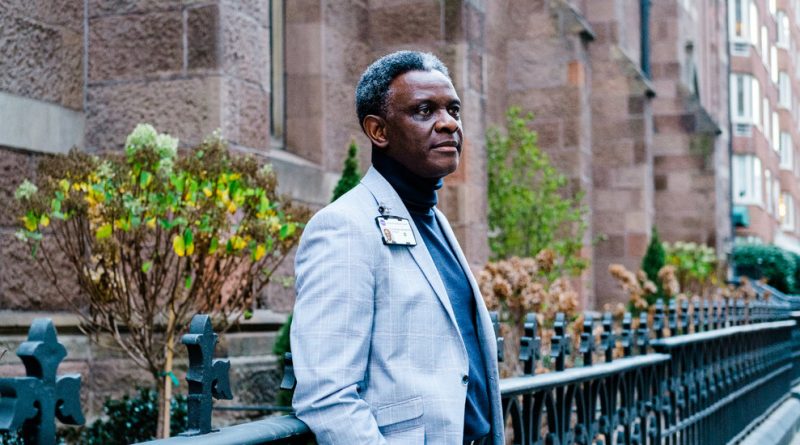Social Inequities Explain Racial Gaps in Pandemic, Studies Find
[ad_1]
When Dr. Gbenga Ogedegbe began to research coronavirus infections among Black and Hispanic patients, he thought he knew what he would find. Infected Black and Hispanic patients would be more likely to be hospitalized, compared with white patients, and more likely to die.
But that’s not how it turned out.
Dr. Ogedegbe, the director of the division of health and behavior at New York University’s Grossman School of Medicine, and his colleagues reviewed the medical records of 11,547 patients in the N.Y.U. Langone Health system who were tested for coronavirus infection between March 1 and April 8.
After accounting for various disparities, Dr. Ogedegbe found that infected Black and Hispanic patients were no more likely than white patients to be hospitalized. If hospitalized, Black patients had a slightly lower risk of dying.
“We were surprised,” Dr. Ogedegbe said.
The study was published in the journal JAMA Network Open. Three other recent large studies have come to similarly surprising conclusions.
The new findings do not contradict an enormous body of research showing that Black and Hispanic Americans are more likely to be affected by the pandemic, compared with white people. The coronavirus is more prevalent in minority communities, and infections, illnesses and deaths have occurred in these groups in disproportionate numbers.
But the new studies do suggest that there is no innate vulnerability to the virus among Black and Hispanic Americans, Dr. Ogedegbe and other experts said. Instead, these groups are more often exposed because of social and environmental factors.
“We hear this all the time — ‘Blacks are more susceptible,’” Dr. Ogedegbe said. “It is all about the exposure. It is all about where people live. It has nothing to do with genes.”
Among many other vulnerabilities, Black and Hispanic communities and households tend to be more crowded; many people work jobs requiring frequent contact with others and rely on public transportation. Access to health care is poorer than among white Americans, and rates of underlying conditions are much higher.
“To me, these results make it clear that the disparities in mortality that we see are even more appalling,” said Jon Zelner, an epidemiologist at the University of Michigan who led one of the new studies.
The toll on Black and Hispanic Americans “could easily have been ameliorated in advance of the pandemic by a less threadbare and cruel approach to social welfare and health care in the U.S.,” he added. “Even failing that, so much of this could have been avoided.”
For example, the federal government could have protected citizens from risky work situations by providing income subsidies allowing them to stay home, Dr. Zelner said. The government could have ensured adequate protective equipment to workers in nursing homes and long-term care facilities.
Dr. Zelner and his colleagues examined data on 49,701 coronavirus patients in Michigan, hospitalized and not, from March until June. In this population, the case fatality rate was the same for Black and white patients: 11 percent.
(The high rate reflects the fact that the incidence in Michigan early in the epidemic was dominated by older people, Dr. Zelner said. And the data involve detected cases, rather than all infections during this period, a time when there was much less testing.)
A study of patients in Veterans Affairs hospitals, led by Dr. Christopher Rentsch of the London School of Hygiene and Tropical Medicine and researchers at the V.A., analyzed the health records of more than five million patients in more than 1,200 facilities.
Some 16,317 tested positive for the coronavirus. Among them, Dr. Rentsch found, there was no difference in mortality rates between patients who were white, Black or Hispanic.
The investigators had expected that underlying health conditions would lead to a higher fatality rate among Black and Hispanic patients, who are more likely to have conditions like obesity and high blood pressure that raise the risk of severe Covid-19.
But in the analysis of the death rate, those conditions “barely made it move,” Dr. Rentsch said. Health disparities by race among V.A. patients, though, tend to be smaller than in Americans over all, he cautioned.
Black and white patients had the same case fatality rate, she and her colleagues found.
“It’s always perplexing when people read the paper,” Dr. Price-Haywood said in an interview. But, she added, by the time someone was sick enough to be hospitalized, race became irrelevant.
“If you were fragile enough to be admitted, you were fragile enough to die,” Dr. Price-Haywood said.
The four studies did confirm stark differences in the incidence of coronavirus infection among minority and white patients.
In Dr. Ogedegbe’s study, Black and Hispanic patients were 60 to 70 percent more likely than whites to be infected. In the research in Michigan, the incidence of infection among Black people was four times higher than that among whites.
“If you were to substitute the white incidence rates for Black ones, you would see an 83 percent reduction in mortality,” Dr. Zelner said.
In the V.A. study, nine of 1,000 white veterans had a positive coronavirus test, compared with 16.4 of 1,000 among Black patients. In New Orleans, Black patients accounted for 76.9 percent of those hospitalized with Covid-19, although they made up just 31 percent of the health system’s population.
These differences are entirely explained by socioeconomic factors, researchers said.
“The larger issue is the role of social determinants of health,” Dr. Price-Haywood said. “Race is a social construct, not biological.”
